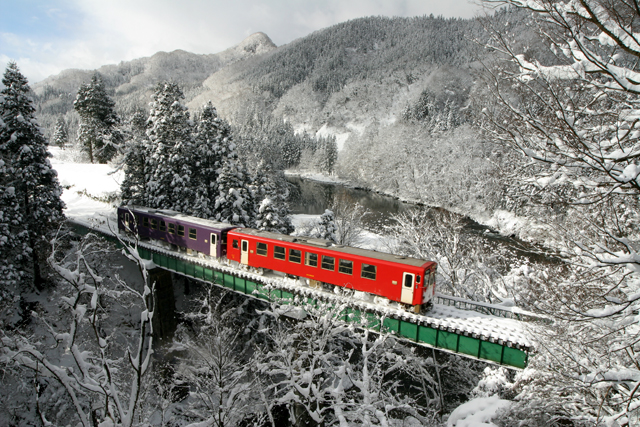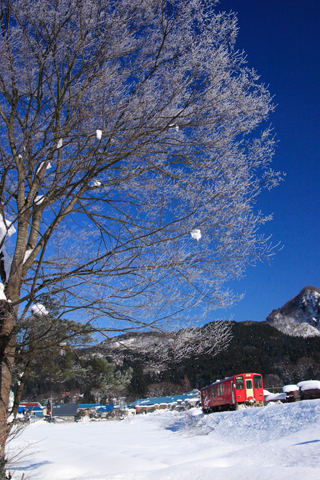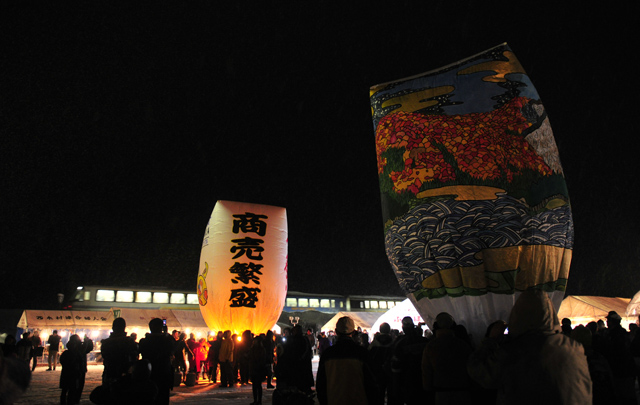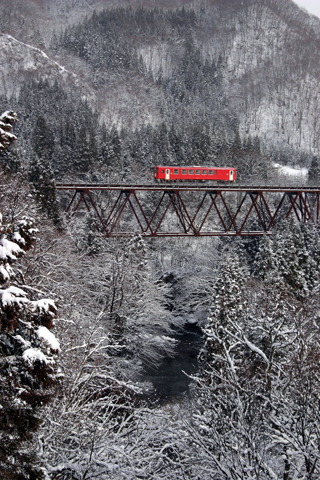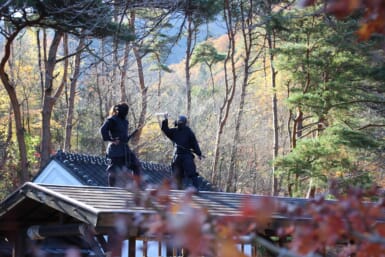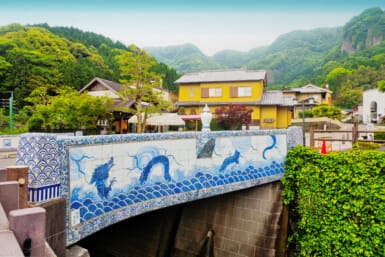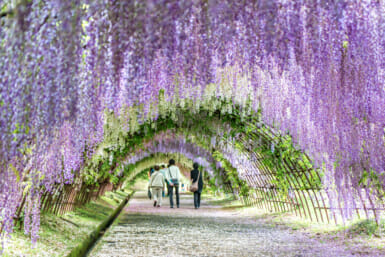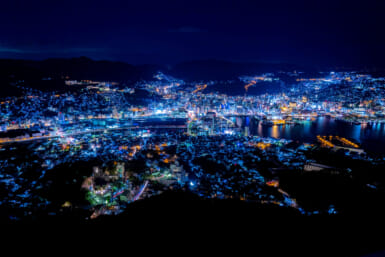Through the heavy Akita snowfall, a train with one or two cars makes its way across bridges that span deep valleys and through tunnels that burrow into the heart of the mountains of the region.
Looking on the scene from a distance, you could imagine that you were glimpsing something from a generation gone by. But if you were to get on board the Akita Nairiku Line and gaze out the window as the snowdrifts gather on the fields and valleys of central Akita, you might feel as if you had stepped into a sumi-e, or inkwash painting, from centuries ago.
The Akita Nairiku Line runs between Takanosu in Kita-akita City and Kakunodate in Senboku City and dates back to the 1930s, when it was used to transport workers and supplies to the Ani Mines, rich in gold, silver and copper. The initial lines have been extended over the decades, and the Nairiku now runs 94.2 kilometers, sinuously winding its way through a course that includes 20 tunnels, 322 bridges, and 29 stations.
Japan’s Shinkansen network makes for speedy travel, but it is often hard to truly enjoy the scenery outside your window when you are moving at hundreds of kilometers an hour. The leisurely pace of the Akita Nairiku Line allows you to catch your breath, or have it taken away by an everchanging landscape that harkens back to a Japan of traditional stories and colorful mythologies. While stunning views can be seen throughout the four seasons, a winter journey through the snow country can be an unforgettable experience.
A Multi-Course Meal, Station by Station
For many, a train trip is incomplete without a bento. What many foreign travelers may not know is that the best bento are made with a special ingredient: mother’s love. To offer a unique travel and culinary experience this winter, the Akita Nairiku Line will be providing a limited service called the Gottsuo Treasure Box Train. The distinctive Akita pronunciation of the word gochiso, gottsuo means “a feast or a fancy meal.” In this case, the feast is of seasonal Akita cuisine, cooked by mothers from local towns. At every stop between Kakunodate and Aniai Stations, the train will come to a stop and the mothers will board the train, each one serving a personal specialty easily rivaling anything you could get at a top-level restaurant. A combination of a multi-course meal and a passage through a wintry panorama like this could only be available for limited periods, so book ahead. The Gottsuo Treasure Box Train runs on three Saturdays: January 25, February 22, and March 15.
A Festival of Floating Lights
The eastern part of Akita Prefecture is a true land of winter, where snow falls for as many as 100 days each year. It is also the home of the Kamihinokinai Paper Balloon Festival, or Kamihinokinai-no Kamifūsen-age, a festival that is said to bring good fortune for the year to come. In a tradition that has run for at least 100 years, the people of the Kamihinokinai district, and seven other districts around the Nishiki area in Senboku City, send their wishes to the sky in the form of illuminated paper balloons. The day of the festival is February 10, but preparation for these three to eight meter–wide balloons starts in December. The participants begin by gluing paper together, then decorating them with colorful designs such as beautiful women or samurai, and finally placing bamboo rings into the balloons for structure. On the evening of the 10th, cloth balls soaked in oil are placed at the mouths of the balloons and ignited, lifting these ornate, delicate hot air balloons high into the night sky by the hundreds.
Some believe that the people of the region learned how to make these balloons from the Edo-period Renaissance man Gennai Hiraga. A writer, doctor, scientist, and inventor, Hiraga visited the area to improve production at the local copper mines at the time, and may have passed on the techniques for creating these globes of light. Over the years, those who create these balloons have used them to pray for many things: a good harvest, the good health of their families, business success, or even safe driving.
The festival itself is also a lively affair, with hearty food and drink that keeps participants and spectators alike warm and in good spirits. Along with the illuminated globes of hundreds of prayers being sent to the heavens, the night is punctuated with a fireworks display, This bright evening in the dead of winter stands as a reminder in this snowy region that the warmth and the light of spring doesn’t lie too far away.
MORE DETAILS
To ride the Akita Nairiku Line, begin at Kakunodate Station, which is one of the stations on the Akita Shinkansen. It takes approximately 3 hours to reach Kakunodate from Tokyo. A one-way ticket from Kakunodate to Takanosu is ¥1620, and takes roughly 2 hours and 45 minutes.
The Gottsuo Treasure Box Train will run between Kakunodate and Aniai Stations on January 25, February 22, and March 15. Trains will depart Kakunodate Station at 11:00 and arrive in Aniai at 12:23. Fare for the ride, including food, is ¥6,900, and tickets are limited to 36 passengers per day. To book a ticket, contact the Akita Nairiku Line Trip Center at 0186-60-1111.
The Paper Balloon Festival is held on February 10, 2014. To reach the event site, take the Akita Nairiku Line from Kakunodate Station and get off at Kamihinokinai Station (~40 minutes; there will be more trains running to accommodate the festival). It is a seven minutes’ walk from the station to the event site. The venue will open at 3 pm, and the balloon launching begins at 6 pm.

